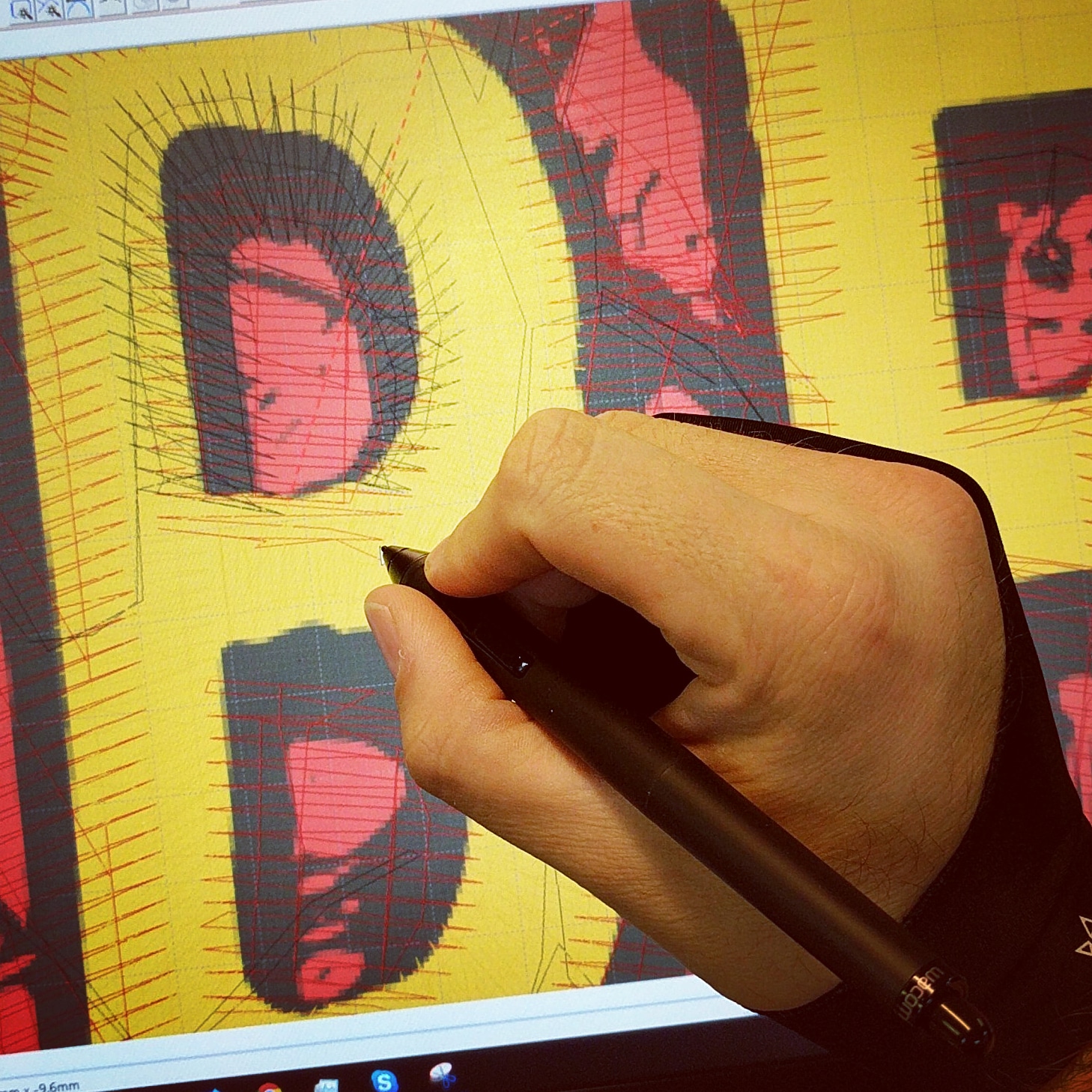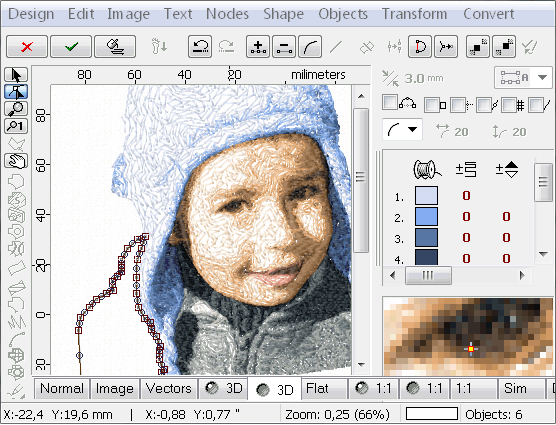Finest Digitizing for Embroidery: Improve Your Jobs
Finest Digitizing for Embroidery: Improve Your Jobs
Blog Article
Mastering the Needlework Digitizing Process: Your Ultimate Guide
Needlework digitizing is a meticulous craft that requires precision and knowledge to equate complex styles into digital formats for device embroidery. As artisans embark on this journey to master the embroidery digitizing procedure, a comprehensive understanding of the essentials establishes the structure for quality.

Comprehending Needlework Digitizing Essentials
Needlework digitizing essentials create the structure whereupon detailed designs are translated into machine-readable styles for exact sewing. This preliminary action in the embroidery digitizing process is important for ensuring that the final stitched product is a devoted depiction of the initial style. Comprehending embroidery digitizing basics includes realizing essential ideas such as stitch kinds, stitch direction, density, padding, and draw settlement.
Sew types play an important role in determining the aesthetic and textural end result of the embroidered design. By picking the ideal stitch kind, whether it be satin, fill, or running stitch, digitizers can achieve the desired result and improve the overall top quality of the needlework. Additionally, sew instructions influences the circulation and measurement of the design, while thickness figures out the spacing and coverage of the stitches.
Furthermore, rug stitching gives security to the design by safeguarding the material and preventing distortion throughout the embroidery procedure. Pull compensation is an additional necessary consideration to neutralize the natural propensity of material to agreement when stitched. Understanding these embroidery digitizing essentials is essential for developing professional-quality embroidered items.
Choosing the Right Digitizing Software Application
Picking the suitable digitizing software application is a crucial decision that dramatically impacts the effectiveness and top quality of the embroidery digitizing process. Digitizing for Embroidery. When selecting the appropriate digitizing software, it is vital to take into consideration factors such as the complexity of styles you intend to develop, the user-friendliness of the software program, the level of client assistance supplied, and the compatibility with your embroidery machine
There are different digitizing software application alternatives readily available on the market, ranging from fundamental programs for novices to sophisticated software application for specialist digitizers. Some preferred choices include Wilcom EmbroideryStudio, Hatch Embroidery Software, and PulseID. These software offer a wide variety of tools and features to assist you create elaborate designs with ease.
Before choosing, it is suggested to discover the various software application choices with totally free trials or demos to identify which one best suits your needs. Additionally, reviewing testimonials and looking for referrals from knowledgeable digitizers can offer important insights into the toughness and weak points of each software program plan (Digitizing for Embroidery). By very carefully examining your demands and comparing the features of various digitizing software program, you can make an enlightened option that improves your embroidery digitizing operations
Digitizing Devices and Methods

Optimizing Style Settings for Embroidery
Grasping the ins and outs of style settings is essential in accomplishing ideal cause the embroidery digitizing process, structure upon the structure laid by recognizing digitizing devices and methods. When enhancing design settings for needlework, it is necessary to take into consideration factors such as stitch kind, thickness, rug, pull compensation, and registration. Sew kind choice affects the overall look of the layout, with choices like satin, fill, and running stitches providing different appearances and results. Thickness refers to the spacing and density of stitches, influencing the style's coverage and resilience. Proper padding sewing supplies stability and useful reference prevents textile distortion, specifically for complicated designs or on elastic products. Pull compensation readjusts for textile stretch during sewing, making certain precise style replication. Enrollment settings straighten different elements of the design properly, preserving general design integrity. By fine-tuning these layout setups, embroiderers can boost the high quality and precision of their stitched creations.

Troubleshooting Common Digitizing Issues
When encountering usual digitizing issues throughout the embroidery process, it is important to comprehend the origin causes and carry out reliable options he has a good point promptly. One typical trouble is stitch density concerns, where stitches might be as well thick, causing the material to tighten, or too sporadic, leading to spaces in the layout. Adjusting the stitch thickness setups in the digitizing software can aid fix this problem.
An additional frequent challenge is thread breaks throughout the needlework procedure. This can occur due to different factors such as wrong stress setups, dull needles, or using low-quality thread. Making sure correct upkeep of the needlework machine, including regular needle modifications and tension modifications, can lessen the event of string breaks.
In addition, layout enrollment mistakes can cause misaligned elements within the embroidery design. Checking the design alignment in the digitizing software and making necessary adjustments before sewing can aid in preventing this concern. By resolving these usual digitizing concerns without delay and effectively, you can ensure a smoother needlework procedure and high-quality finished get more products.
Conclusion
To conclude, mastering the embroidery digitizing process calls for a strong understanding of the essentials, the ideal option of software program, and expertise of devices and strategies. Maximizing style setups and fixing typical digitizing issues are crucial actions in making sure top notch embroidery results. By adhering to these steps vigilantly, one can attain accuracy and efficiency in the digitizing procedure.
Report this page